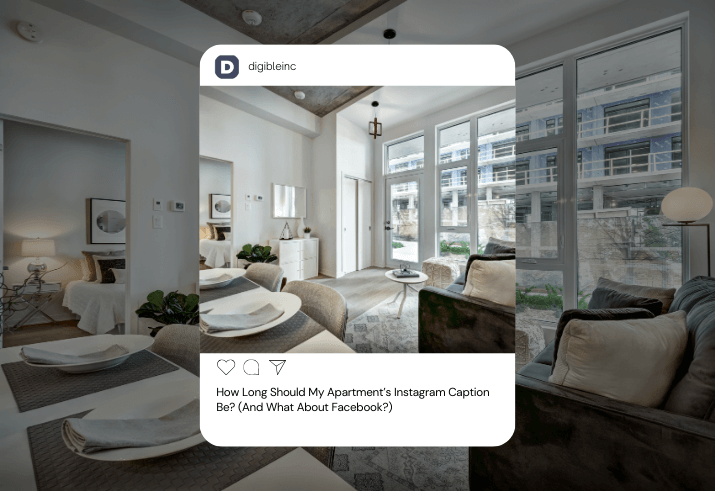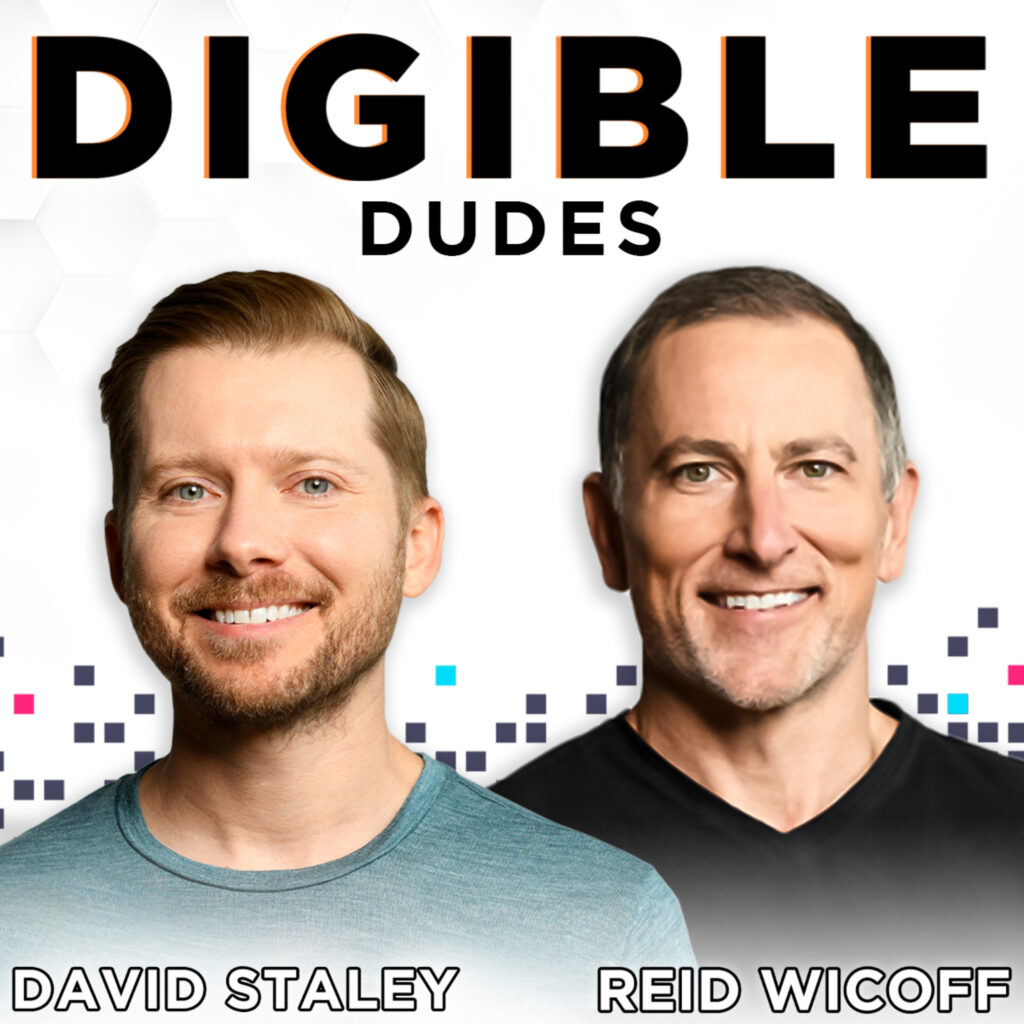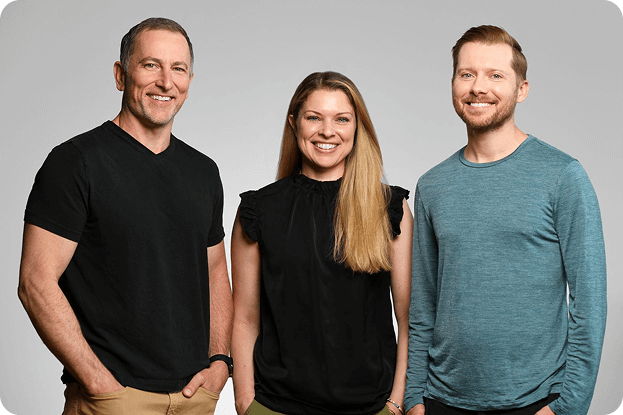When we think of paid search advertising, we think of a simple, straightforward ad consisting of a bold blue headline, a few description lines, and clickable links. Look familiar?

The purpose of this ad is to push potential renters from the Google SERP to your website where digital marketers hope prospects take further action by way of a call or form fill…plain and simple. Don’t get us wrong, this ad is vital to your PPC strategy, but it shouldn’t be your only strategy.
There are two long-standing issues with traditional search ads or Expanded Text Ads (ETAs).
One is they don’t offer imagery, key pieces of information, or an interactive experience for potential renters. And two, by the time a prospective renter has come to Google, they are no longer in the awareness stage of the funnel. Searchers are in the consideration phase or potentially in the conversion phase. What does this mean? This means that your property may not even be considered in the final stages of the decision-making process. With traditional search ads, potential renters are shown text and links…and that’s about it. When we think of the apartment marketing industry, we must think beyond blue headlines and clickable links.
We have to think of the bigger picture and ask ourselves how we want to position our brands in the eyes of the renter:
More recently, Google introduced two different strategies to bolster its platform as one capable of much more than bottom-of-the-funnel marketing. These two strategies are Local campaigns and Discovery campaigns. Unlike other Google ad products, Local and Discovery campaigns introduce an educational component inclusive of images, videos, diverse placements, and most importantly, these ad units are able to reach audiences at the top of the funnel.
Both campaigns are immersive and interactive in nature while placing brand awareness as a key objective. In this blog, the Digible team will give you the 411 on all things local and discovery campaigns. Don’t worry, we did the testing, digging, and dating pulling so that you don’t have to.
How do we find renters at the top of the marketing funnel before they are interested in renting an apartment? How can we highlight the properties location, unique amenities or showcase videos of one-of-a-kind floor plans?
First, Let’s Start with Local Campaigns.
Local campaigns show ads across many different Google networks, including YouTube, Maps, Gmail, and the Display Network. They are intended to drive engagement through brand awareness, click-to-calls, initiating driving directions to the property, and website traffic.
GMAIL + DISPLAY
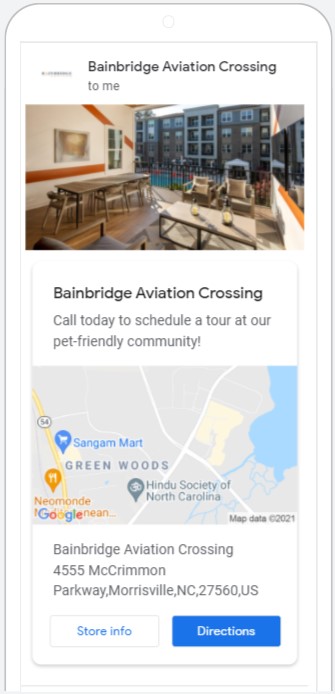

YOUTUBE + SEARCH


Local campaigns provide an informative and aesthetic way to interact with your brand and learn more about the unique features of your product offering. The question is, how do they perform? When looking at local campaigns, it’s important that we don’t measure success in the same way we do for traditional search ads. These campaigns won’t be generating hundreds of calls or flooding your leasing teams with a mountain of leads, however, as we know, that isn’t the point of these campaigns. Successful local campaigns will see high engagement in the way of local conversions, clicks to call, and local actions. These micro-conversions allow us to engage users at the top of the funnel, and once we’ve introduced potential renters to our brand, it’s much easier to capture conversions when they get to the bottom of the funnel.

Now what do all of these numbers mean?
Well, these metrics are considered local conversion insights, a very fancy term for interactions with your local campaigns.
Clicks to Call: This action occurs when you tap the click-to-call button. The number will appear on your mobile device and a user must tap again to connect the call.
Local Actions – Directions: This action occurs when a user clicks on the “Get Directions” button on any location-based ad, think Google Maps.
Interactions: Interactions are defined as clicks on your ad, engagements, or even video views.
Interaction Rate: (Interactions / Impressions) The rate at which users interact with your ad. This metric can help you determine the success of your local campaign.
Discovery Ads
Now that we’ve gone over Local campaigns, let’s talk about Discovery ads. Discovery ads show across Gmail, the Google Discovery App, and YouTube, appearing in front of users in the moments when they are open to discovering new products and services. That amount of exposure, paired with anticipated user intent all sounds pretty great, right? But does it even work?


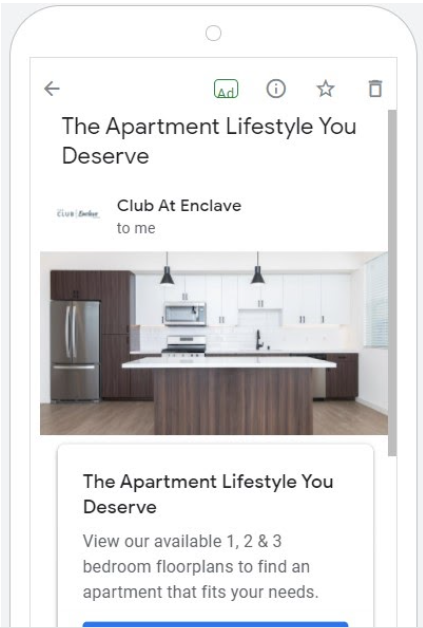
To answer the question, does it work? The answer is heck yes! Let’s take a deeper dive into the numbers

Account impressions for Discovery ads were +797% higher than other non-brand campaigns, and clicks were +70% greater than other non-brand campaigns, with a -84% lower average CPC. Additionally, all accounts experienced brand lift via increased brand traffic, despite budgets remaining flat. This lift can be attributed to Discovery ads introducing new users to the brand, and users returning through other media channels like Google, Facebook, or Display when they are lower in the conversion funnel.
Now let’s take a look at efficiency metrics, shall we? The story gets a bit more complex, so buckle up. Due to the high amount of traffic driven by Discovery ads, rate metrics such as click-through rate and conversion rate are understandably lower. Cost per lead for Discovery ads in aggregate was also +96% higher than non-brand CPL, but, as stated earlier this tactic is geared more towards growth than efficiency.
In conclusion, the Digible team highly recommends diversifying your media buys through the introduction of Local and Discovery campaigns in your media mix. If you’re focused on growth, engagement, and increasing brand awareness, these campaign types are made for you.
Chat with your account manager today to see if these campaigns are right for you!
Questions? Comments? Concerns? Hit us up at hello@digible.com…we’d love to chat!




